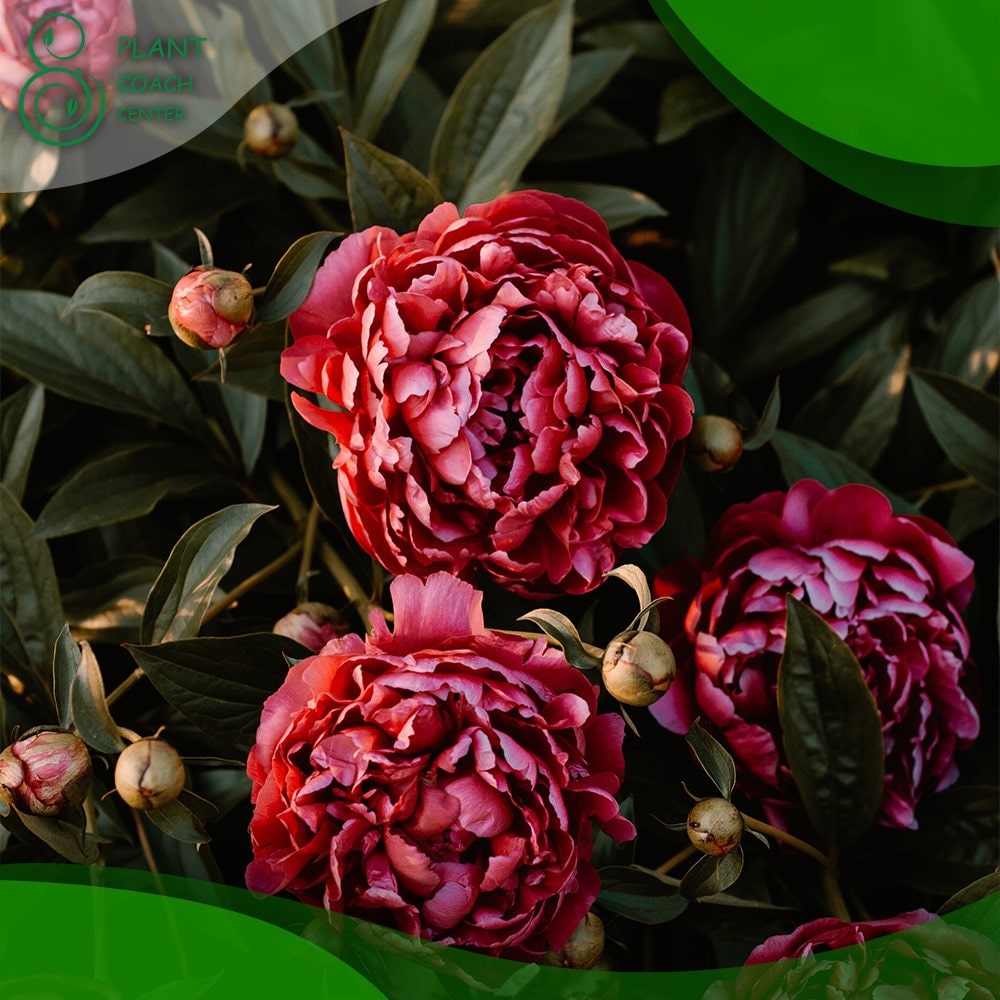When can you transplant peonies?
Welcome to the enchanting world of peonies, where these exquisite blossoms captivate gardeners and flower enthusiasts with their mesmerizing beauty and alluring fragrance. As avid cultivators, we cherish the moments when our peonies bloom in full splendor, gracing our gardens with a kaleidoscope of colors. However, whether it’s due to a desire to redesign our outdoor spaces, a need to revitalize their growth, or simply the wish to share their beauty with others, there may come a time when we contemplate transplanting these beloved flowers.
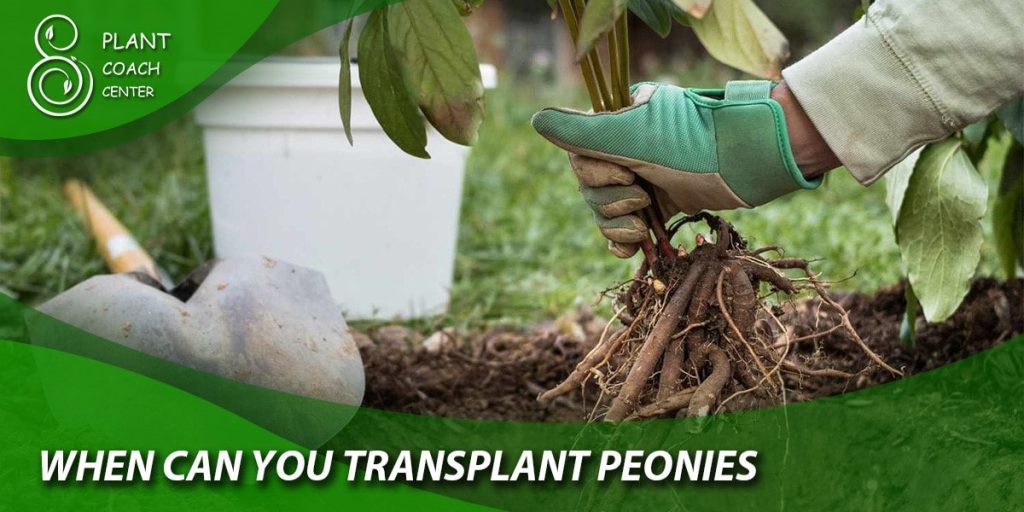
But when is the best time to undertake this delicate task? How do we successfully relocate these perennial treasures without compromising their health and bloom potential? In this article, we embark on a journey through the seasons, exploring the art of peony transplantation, from the opportune moments to perform the deed to the careful steps required to minimize plant stress.
Join us as we uncover the secrets of when and how to transplant peonies, allowing you to nurture their beauty in new corners of your garden and share the magic of these captivating blooms with the world.
Peonies on the Move: The Best Seasons for Transplanting
Transplanting peonies is an exciting venture, offering a chance to rejuvenate your garden and propagate these stunning flowers to new corners of your landscape. However, timing is crucial when uprooting and relocating these perennial beauties. The success of peony transplantation largely depends on choosing the right season to undertake this delicate task.
Spring Awakening: Early Spring Transplantation
Early spring, just as the soil thaws and temperatures rise, marks an ideal time for peony transplantation. As the plants emerge from dormancy, they start to form new growth, and their energy reserves are at their peak. Transplanting during this period allows the peonies to establish their root systems before the summer heat sets in, ensuring a higher chance of survival and successful adaptation to their new environment.
Fall Magic: Late Summer to Early Fall Transplantation
Another opportune time for peony relocation is in late summer to early fall, typically from late August to September. During this period, the weather cools down, providing a less stressful environment for transplanted peonies. The soil is still warm enough to encourage root development, even as the plants prepare to enter dormancy for the winter. By transplanting in early fall, you give the peonies ample time to settle in and establish their root systems before winter’s arrival, allowing them to emerge more substantially and robustly in spring.
Avoiding Extreme Conditions: Summer Transplantation Considerations
While it’s possible to transplant peonies during the summer, it’s generally not recommended due to the extreme heat and stress it can impose on the plants. If you need to move peonies during summer, take extra precautions to minimize stress by providing adequate shade and water. Be prepared to offer additional care to help the peonies withstand the challenging conditions until they become better established.
The Art of Uprooting: Preparing Peonies for Transplantation
Transplanting peonies requires careful preparation and a delicate touch to ensure the process goes smoothly and the plants have the best chance of thriving in their new location. Here’s a step-by-step guide on the art of uprooting and preparing peonies for transplantation:
Timing is Key
As discussed in the previous section, choosing the right season is crucial for successful peony transplantation. Whether you opt for early spring or late summer to early fall, plan ahead and mark your calendar for the optimal time.
Preparing the New Site
Before uprooting your peonies, preparing their new home is essential. Select a location that receives at least six hours of sunlight daily and has well-draining soil. Clear the area of any weeds or debris and dig a hole large enough to accommodate the peony’s root system.
Watering
Adequate hydration is vital in preparing. Water the peonies thoroughly a day or two before you plan to transplant them. Moist soil will make it easier to lift the plants without causing damage to their delicate root systems.
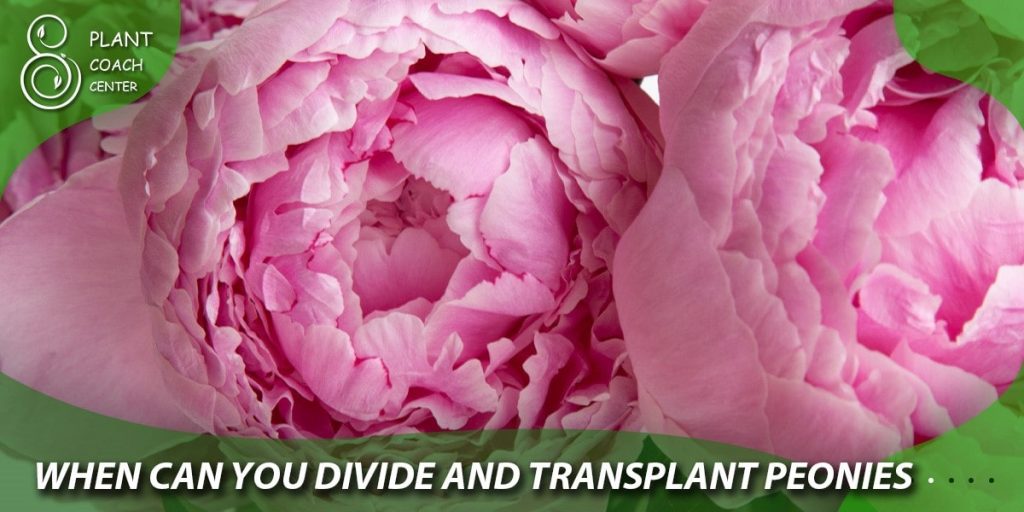
Gently Uprooting the Peonies
To uproot the peonies, use a spade or garden fork to dig around the plant, keeping a generous radius to avoid cutting any roots. Work around the plant to loosen the soil before lifting it.
Dividing (Optional)
If you want to propagate your peonies or if they have grown into sizeable clumps, you may choose to divide them during transplantation. Gently separate the chunks into smaller sections, ensuring each division has three to five healthy eyes (buds).
Trimming and Cleaning
Once uprooted, carefully shake off excess soil and trim any damaged or overly long roots. Also, cut back the foliage to about six inches from the ground. This will help reduce water loss through the leaves and focus the plant’s energy on root development.
Planting at the Right Depth
When transplanting the peonies in their new location, ensure they are planted at the same depth they were at their previous spot. Planting too deep or too shallow can hinder their growth and flowering.
Mulching and Watering
Apply a layer of organic mulch around the transplanted peonies to retain moisture and suppress weed growth. After planting, give the peonies a thorough watering and continue to water regularly during the first growing season to encourage root establishment.
Finding a New Home: Choosing the Perfect Location for Transplanted Peonies
The success of transplanted peonies greatly depends on selecting the ideal location in your garden. As you embark on this exciting journey, consider the following factors when choosing the perfect spot for your peonies to thrive:
Sunlight Exposure
Peonies are sun-loving plants that require ample sunlight to produce bountiful blooms. Look for a location that receives at least six to eight hours of direct sunlight daily. Avoid areas with excessive shade, resulting in weak stems and diminished flowering.
Well-Draining Soil
Peonies prefer well-draining soil that prevents waterlogging, as their roots are susceptible to rot in overly wet conditions. Test the soil’s drainage by digging a hole and filling it with ground suitable for peonies. If the water drains within a few hours.
Wind Protection
Peonies love sunlight but can be vulnerable to strong winds that may damage their large and delicate blooms. Planting them near a fence, wall, or shrubs can provide the necessary protection from harsh winds.
Space to Grow
Peonies are long-lived perennials that can thrive for decades if given adequate growing space. Ensure there is enough room for the mature plant to spread its roots and foliage without crowding other plants nearby.
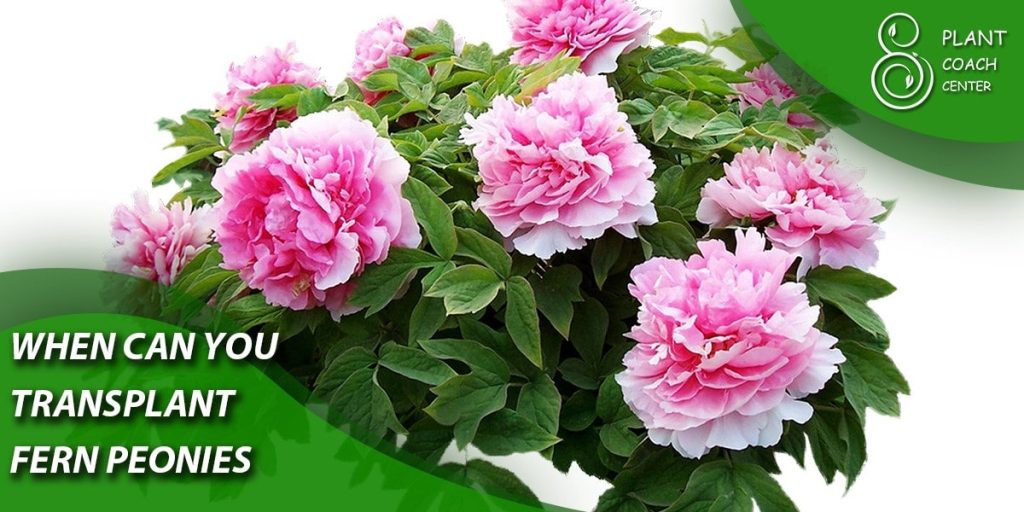
pH Level
Peonies prefer slightly acidic to neutral soil, with a pH range of 6.0 to 7.0. Test the soil’s pH level and amend it if necessary to create an optimal environment for your peonies.
Air Circulation
Good air circulation helps prevent diseases and promotes plant health. Avoid planting peonies in areas where they might be surrounded by dense vegetation, as this can impede airflow.
Complementing the Landscape
Consider how the peonies will fit into the overall aesthetic of your garden. Choose a location that complements the surrounding plants and landscaping elements, enhancing the visual appeal of your outdoor space.
Ease of Access
When selecting a spot for your peonies, consider accessibility for maintenance tasks such as watering, pruning, and deadheading. Having easy access to the plants will make it more convenient to care for them properly.
Weathering the Transition: Caring for Transplanted Peonies
Congratulations on successfully transplanting your peonies to their new home! Now that they are settled into their new location, providing the proper care during their initial stages of growth is essential to help them weather the transition and establish themselves for long-term success. Here are some valuable tips for caring for your transplanted peonies:
Watering
Adequate watering is crucial during the first few weeks after transplantation. Keep the soil consistently moist but not waterlogged. Provide deep watering once or twice a week, especially during dry spells. Mulching around the peonies will help retain soil moisture and reduce weed competition.
Fertilization
While it’s best to avoid heavy fertilization immediately after transplanting, you can apply a balanced, slow-release fertilizer in the spring of the following year. This will give the peonies the nutrients they need for healthy growth and abundant flowering.
Supporting the Stems
As your transplanted peonies grow, their stems might become heavy with the weight of blooms. Using support structures like stakes or peony rings will prevent the branches from bending or breaking, preserving the beauty of the flowers.
Deadheading
To encourage continuous blooming and prevent energy wastage, remove faded flowers by deadheading. This will redirect the plant’s energy towards root and foliage development, ensuring a more robust plant in the long run.
Pest and Disease Management
Keep a close eye on your peonies for any signs of pests or diseases. Aphids, botrytis blight, and powdery mildew are some common issues that may arise. Early detection and appropriate treatment will help protect your peonies’ health.
Overwinteringes
proper winter protection is cru in colder climates. Apply a thick layer of mulch around the base of the plants in late fall to insulate the roots and protect them from freezing temperatures.
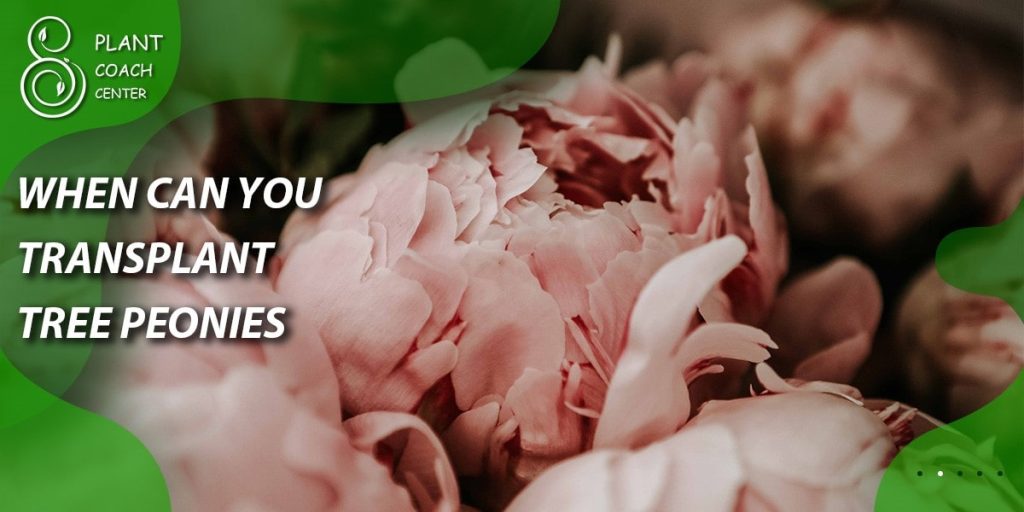
Avoid Disturbing the Roots
Once peonies are transplanted, they may take a year or two to fully establish their root systems. Avoid disturbing the roots unnecessarily during this period, as it can hinder their growth and flowering potential.
Patience and Observation
Transplant shock is common, and it’s normal for your peonies to show signs of stress initially. Be patient and observe their progress. With time and proper care, they will acclimate to their new environment and reward you with their majestic blooms.
Surviving Change: Overcoming Transplant Shock in Peonies
Transplanting peonies can be a stressful experience for these beloved perennial plants. As they adjust to their new environment, they may undergo transplant shock, which can manifest in various ways. However, you can help your peonies overcome transplant shock and flourish in their new home with proper care and attention. Here’s how to navigate this critical phase:
Expectations and Patience
Setting realistic expectations when transplanting peonies is essential. The shock from uprooting and relocating can cause temporary setbacks, such as wilting, yellowing leaves, or delayed growth. Remember that peonies are resilient plants, and with time and care, they will rebound.
Watering Adequately
Proper hydration is vital during recovery. Keep the soil consistently moist but not waterlogged. Avoid excessive watering, as this can lead to root rot. A slow and deep watering once or twice a week, depending on weather conditions is generally sufficient.
Mulching for Protection
Apply a layer of organic mulch around the base of the peonies to insulate the soil and protect their delicate roots. Mulch helps regulate soil temperature, retains moisture, and minimizes temperature fluctuations, all of which aid in overcoming transplant shock.
Root Stimulants and Transplanting Solutions
Consider using root stimulants or transplanting solutions containing beneficial growth hormones and nutrients. These can aid in root development and help the peonies establish themselves more quickly.
Avoiding Over-fertilization
While peonies will benefit from light fertilization in their new location, refrain from over-fertilizing, especially during the recovery phase. High nitrogen levels can encourage excessive leaf growth at the expense of root development.
Shade and Protection
If your peonies show extreme stress, consider providing temporary shade during the hottest parts of the day. Shade cloths or an umbrella can shield them from intense sunlight until they acclimate.
Trimming Dead or Diseased Foliage
Removing dead or diseased foliage will redirect the plant’s energy towards new growth and recovery. Use clean, sharp scissors or pruning shears to make clean cuts.
Observation and Adjustments
Monitor your peonies closely during recovery. If you notice any signs of pests or diseases, promptly address the issues. Adjust your care routine as needed based on how the plants respond.
Division and Conquer: Propagating Peonies Through Transplantation
Propagating peonies through division is an excellent way to expand your peony collection or share the beauty of these magnificent flowers with friends and family. The division allows you to create new plants from an established clump and rejuvenates older peonies, encouraging healthier growth and increased blooming. Here’s a step-by-step guide to successfully propagate peonies through transplantation:
Choosing the Right Time
The best time to divide peonies is in the early fall when they enter dormancy. Dividing during this period gives the plants ample time to establish their root systems before the next growing season.
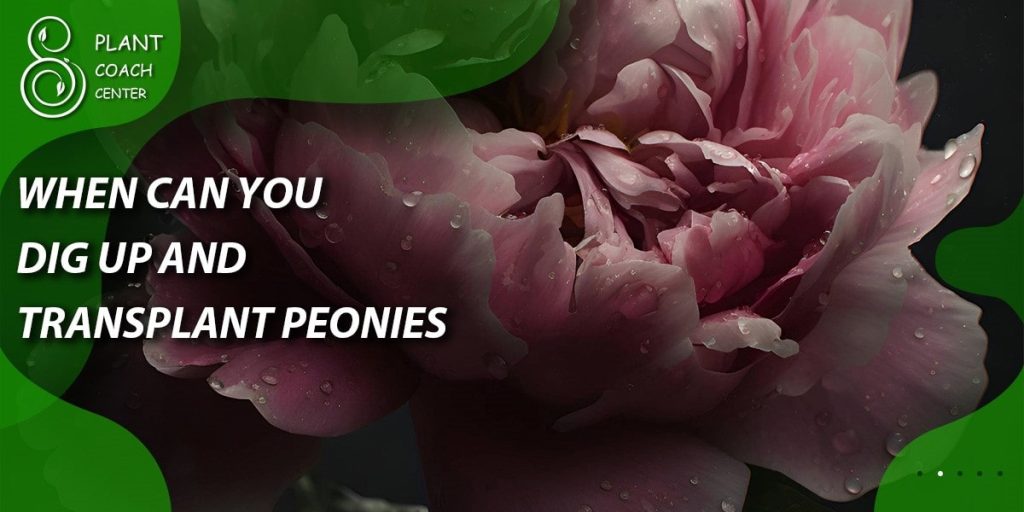
Preparing the Plants
Start by cutting back the foliage of the peony clump to about six inches from the ground. This reduces water loss through the leaves and focuses the plant’s energy on root development.
Uprooting the Clump
Carefully dig up the entire peony clump, not damaging the roots. Use a spade or garden fork to loosen the soil around the plant before lifting it out of the ground.
Dividing the Clump
Once the peony clump is out of the ground, gently shake off excess soil to expose the roots. Identify natural divisions in the cluster, where separate shoots emerge from the central crown. Use a clean and sharp knife to cut the clump into sections, ensuring each division has three to five healthy eyes (buds) and a good portion of roots.
Trimming and Cleaning
Trim any damaged or excessively long roots from the divisions. Also, remove any parts of the clump that appear weak or diseased. Cleaning the divisions will ensure a healthy start in their new locations.
Selecting the New Sites
Choose suitable locations for transplanting the divisions in your garden. Follow the guidelines discussed earlier in this article (Finding a New Home: Choosing the Perfect Location for Transplanted Peonies) to ensure the selected sites meet the requirements for successful growth.
Planting the Divisions
Dig holes for each division that are wide and deep enough to accommodate their root systems comfortably. Place each division in its respective spot, ensuring the eyes (buds) face upward and the roots spread out.
Backfill and Watering
Fill the holes with soil and lightly tamp it down to eliminate air pockets. Water the newly transplanted divisions thoroughly to settle the soil around the roots.
Post-Transplant Care
Follow the guidelines for caring for transplanted peonies (Weathering the Transition: Caring for Transplanted Peonies) to provide optimal conditions for the divisions to establish themselves.
Conclusion
In conclusion, mastering the art of transplanting peonies opens possibilities for gardeners and flower enthusiasts. From choosing the opportune seasons and preparing the peonies for their journey to finding the perfect location and caring for them during the critical recovery phase, each step plays a vital role in ensuring their successful transition and long-term flourishing.
Whether dividing and propagating these enchanting blooms to share their beauty or rejuvenating older clumps to encourage healthier growth, the rewards are immeasurable. At PlantCouchCenter.com, we hope this comprehensive guide empowers you to embark on this horticultural adventure with confidence and joy.
As you nurture and preserve these magnificent flowers, may your garden be transformed into a breathtaking tapestry of peony colors, fragrance, and elegance, captivating the hearts of all who encounter these mesmerizing blooms. Happy gardening!
Can I transplant peonies in the summer?
While possible, it's not recommended. Summer transplanting can stress peonies due to the heat, so opt for early spring or late summer to early fall.
How do I divide peonies for propagation?
Dividing peonies involves uprooting the clump, separating natural divisions, and ensuring each section has 3-5 healthy eyes and roots.
What care do transplanted peonies need?
To overcome transplant shock, transplanted peonies need consistent watering, mulching for protection, and patience during their recovery period.


